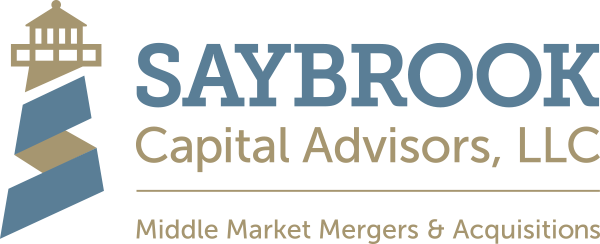Company and External Factors Influencing Business Valuation
/As a mergers and acquisitions intermediary, one of the most contentious discussion topics I encounter when meeting with a prospective business seller relates to business valuation. Most potential sellers have a preconceived notion of what their businesses are worth rather than knowledge based on specific value drivers to support a realistic assessment of value.
The following list represents some of the business and economic factors that can have a significant impact on business valuation. Strategic and private equity buyers will assess these and other factors to determine the upside of an opportunity and to determine the degree of risk they perceive to be associated with a potential acquisition target. It is precisely these factors that a buyer uses to determine what valuation multiple to apply to their assessment of your business' normal earnings or cash flow generating ability in order to make an offer.
Company-Controlled Factors Influencing a Business’ Valuation
| VALUE DRIVERS | VALUE DIMINISHERS |
|---|---|
| Larger revenue size | Smaller revenue size |
| Strong revenue growth rate | Declining, flat or low revenue growth |
| Higher, consistent gross margins¹ | Low, inconsistent gross margins¹ |
| High preponderance of negotiated sales opportunities | High preponderance of bid sales opportunities |
| Higher then average industry operating margins¹ | Low industry operating margins¹ |
| Strong, diverse management team | Company primarily dependent on the owner |
| Consistent history of profitability | Inconsistent profit history |
| Strong, sustainable, predictable cash flow | Weak, unpredictable cash flow |
| Repeat customers | One-time customers |
| Strong, profitable order backlog | Low, declining-profitability order backlog |
| Niche products or services | Commodity products or services |
| Strong barriers to market entry | Low barriers to market entry |
| Proprietary products or technology | No proprietary products or technology |
| Low foreign competition exposure | Significant foreign competition exposure |
| Large market potential | Limited market potential |
| Low annual capital expenditure requirements | High annual capital expenditure requirements |
| Low exposure to technological change | Significant exposure to technological change |
| Multiple, strong sales distribution channels | Single, weak sales distribution channel |
| Low customer revenue concentration | High customer revenue concentration |
| Multiple revenue sources (pillars) | Single revenue source (pillar) |
| Strong industry market share | Low industry market share |
| Strong, recognizable brand identity | Minimal brand identity |
| Well-maintained equipment | Significant deferred equipment maintenance |
| Modern, highly productive equipment | Outdated equipment |
| Not a highly regulated industry | Highly regulated industry |
| Audited financial statements | Compiled financial statements |
| Nonunion workforce | Unionized workforce |
| Written and assignable customer agreements | Unwritten or not assignable customer agreements |
| Written contingency plan in place | No contingency plan |
| Key employee agreements, noncompetes | No or weak agreements with key employees |
| Written business plan | No business plan |
| Recent legal due diligence review | No recent legal due diligence review |
| Clean balance sheet | Balance sheet cluttered with obsolete and personal assets |
| History of achieving financial projections | Inconsistently meets financial projections |
(1) For companies in general and for the specific industry
External Factors Influencing a Business’ Valuation
| VALUE DRIVERS | VALUE DIMINISHERS |
|---|---|
| Merger and acquisition market is active | Merger and acquisition market is down or flat |
| Company is in a growing industry | Company is in a mature or declining industry |
| Economy is growing | Economy is recessionary, flat or hardly growing |
| Interest rates are low | Interest rates are high or rising rapidly |
| Strategic buyers have cash on hand | Strategic buyers are holding onto their cash |
| Private equity buyers are investing | Private equity buyers are not buying/investing |
| Transaction financing sources are lending at higher turns of EBITDA | Transaction financing sources are lending at much lower turns of EBITDA |
| Transaction taxation rates are low | Transaction taxation rates are higher |
Some of the above value drivers are more important than others. Many of these can be analyzed and addressed as part of a comprehensive “exit planning” process.
If you have any questions or would like to confidentially discuss how these factors relate to your business’s valuation, please contact me for a free consultation.

